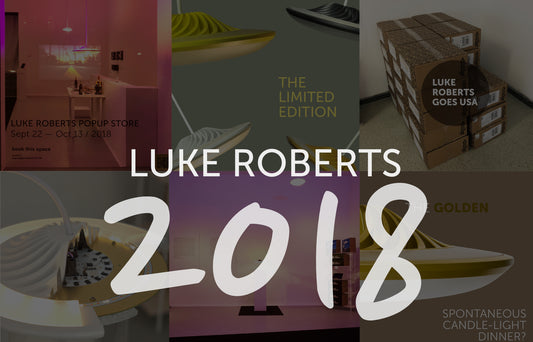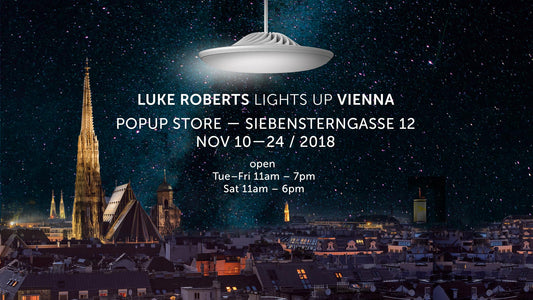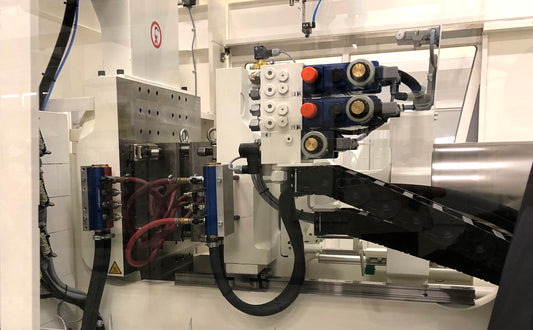
When moods are set by lighting: A guide to the right colour temperature in your room
A Matter of Warm & Cold
Apart from the brightness (lm), the colour temperature of light significantly affects our body and mind. Here, the colour refers to the warm and cold white tones. Warm tones, like candlelight, have a yellowish, reddish hue, while cold ones, like daylight, are bluish.
For a more precise classification, we use the unit Kelvin (K). In our lighting context, it serves as a kind of “warmth scale” and is therefore found on every light bulb packaging. Here is how it works, in super short:
The higher the Kelvin number, the cooler the light, and the lower the K value, the warmer the light.

Why does the colour temperature impact our mood?
That is because it is linked to the effects of daylight on our internal clock, primarily the production of the sleep hormone melatonin. Blue tones lower melatonin levels, while warm tones increase them. The colour temperature can influence us, just like day and night. So whatever daily life throws at us, we can use light “correctly” to help us feel better.
As a guide, the colour temperature can be divided into the following three ranges:
- Warm light, below 3,500 Kelvin
- Neutral light, 3,500-5,000 Kelvin
- Cool light, above 5,000 Kelvin
Warm Light: Effect & Use

Colour temperature: up to 3,500 Kelvin
Prominent everyday examples in this category:
- Candlelight: approx. 1,500 K
- Light bulb (standard to LED): between 2,700 and 3,300 K
- Twilight: approximately 2,500-3,400 K
Rooms: Living room & Bedroom
Warm white light embodies the ultimate feel-good lighting. It brings comfort and cosiness to every space – from bars, wellness areas, and restaurants to the living and bedrooms in our homes.
Paired with the right brightness, warm light always creates a pleasant, homey atmosphere.
Effect: calming & relaxing
- It helps to unwind at the end of a day, in between, or throughout an entire weekend. It's perfect right before bedtime.
- It creates a cosy and inviting ambiance. Suitable for romantic dinners, relaxing movie nights, or reading sessions on the couch.
- It is more comfortable on the eyes in dim and relaxed environments, since we prefer softer contrasts here. The reduced blue tones further minimize the potential for glare.
Neutral Light: Effect & Use

Colour temperature: 3,500-5,000 Kelvin
Prominent everyday examples in this category:
- Office ceiling lights: approximately 4,000 K
- Moonlight: 4,100 K
- Operating room: 3,800-4,600 K
Rooms: Kitchen & Living Room
Neutral white light is an all-rounder among colour temperatures. It offers a balanced colour scale for clear, consistent lighting. It ensures optimal visibility in a room without making it feel too sterile. It helps us focus without getting fatigued.
This balance is essential for our daily routine in offices, shops, or classrooms. At home, it's especially well-suited for the kitchen or bathroom.
Effect: enhances concentration, true-to-colour
- It helps maintain alertness and activity. A good choice for work, studying, or reading sessions.
- It provides the most natural, accurate colour representation, making it the best choice for artistic and creative work – from food photography to paintings.
- It creates a balanced atmosphere, appearing neither too relaxing nor too cool or uncomfortable.
Cool light: Effect & Use

Colour temperature: above 5.000 Kelvin
Prominent everyday examples in this category:
- Smartphone photo flash: approximately 5,500 K
- Smartphone display: between 6,500-7,200 K
- Cloudy sky: around 6,500 K
- Blue sky: 9,000 K to 12,000 K
Rooms: Bathroom & Study
Cold white light, due to its elevated blue component, feels like an energy boost. It represents the spectrum of daylight. Accordingly, rooms with little natural light benefit from a bright, clear ambiance.
It is thus appropriate for gyms, labs, workshops, or other workplaces. For those who want optimal visibility at home, cold light is also suitable for bathrooms or studies, giving an extra dose of focus.
Effect: revitalizing, performance enhancing
- It assists in waking up since the blue light is invigorating. However, it can also keep us awake and may disturb our internal clock. Consider switching to “Night Shift” or a book instead of a smartphone before sleeping.
- It may help improve performance and productivity; being mentally alert for precise, focused work.
- It provides higher contrasts, which can reduce eye strain during prolonged reading and focus sessions. Careful, the line between “unpleasant” and “dazzling” is thin.
Focus on feeling
The objective colour temperature and its subjective perception can be two very different things. Like with music, taste, and preferences vary from person to person. Moreover, the surroundings and the time of day are key factors in finding the right light for the right activity. When we switch on a lamp in a specific moment and space, we need to keep in mind those contextual points and think about which impact of light we want to “use”. Do we want lighting that comforts us, helps us to fall asleep or waking up?
Yet, in reality, rooms rarely serve only one sole function. A living room, for instance, works great for watching Netflix on the couch but is equally perfect for dining, playing, reading, or occasional working. Being able to combine different settings is the key to find your personal lighting harmony. And how do we get there? Easy, with versatile lighting solutions just like a luvo, that brightens a room in every colour, shape, and direction.
All in all, when we focus on flexibility in lamps, we can get light with all its benefits in return. And thus, enjoy lighting that feels like a companion throughout the day. So let's switch on some good vibes.



























